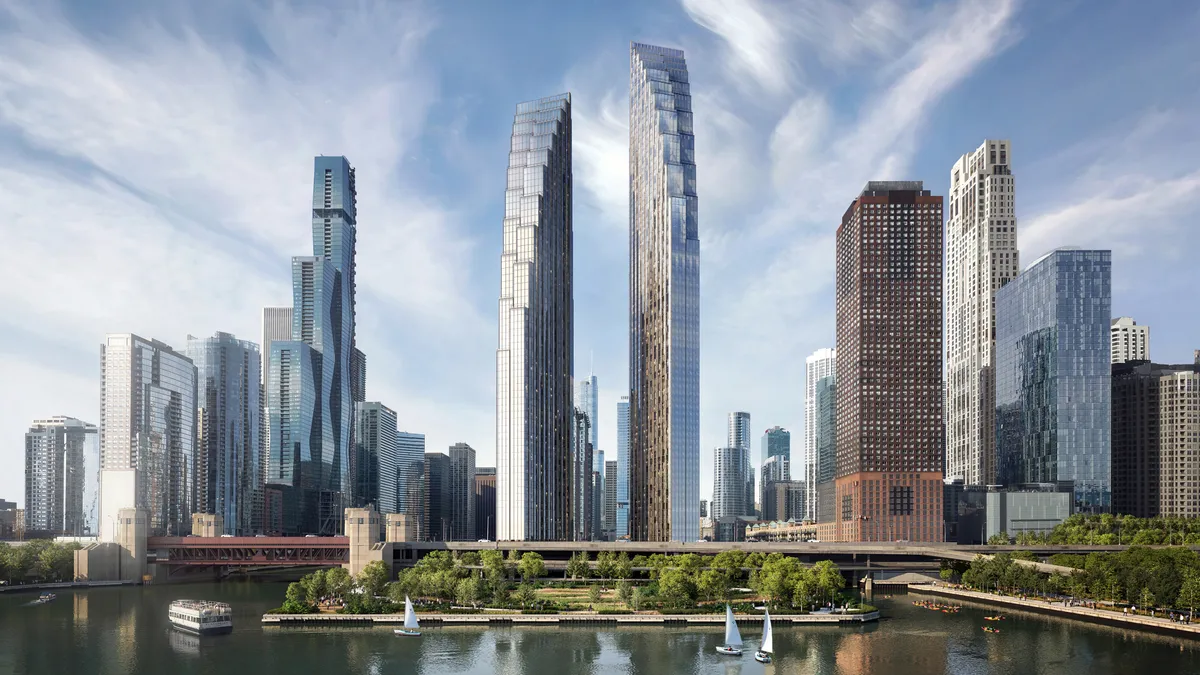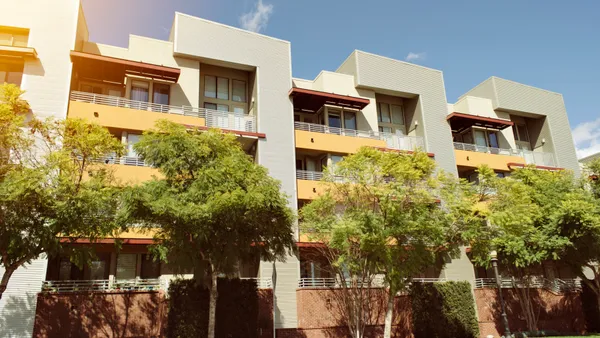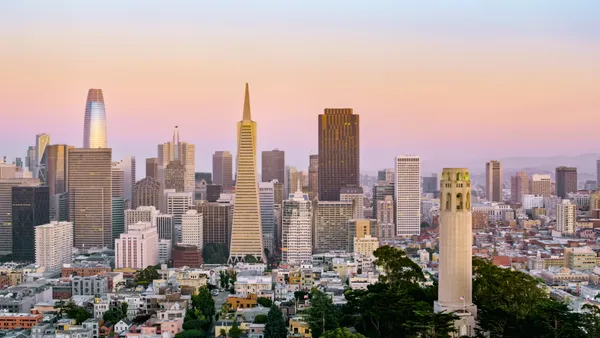Dive Brief
- Starts for buildings with five or more units declined 35.9% year over year to a seasonally adjusted rate of 377,000 in February, according to a report from the HUD and the U.S. Census Bureau.
- Developers pulled permits for 429,000 apartments in buildings with five units or more in February, a 32.8% YOY drop. At the end of the month, 966,000 units were under construction, a 1% YOY decrease.
- Developers completed 644,000 apartments in buildings with five or more units in February, an 18.8% YOY increase and a 20.8% jump from January.
Dive Insight:
According to Dodge Construction Network, the largest multifamily structures to break ground in February were:
- The $500 million 400 Lake Shore Drive North Tower in Chicago.
- The $400 million Alia at 888 Ala Moana building in Honolulu, Hawaii.
- A $200 million mixed-use development in Gowanus, New York.
Overall, housing starts hit almost 1.5 million in January, a 5.9% YOY increase. Single-family builders were authorized for 1 million units, a 22% jump. Housing permits crested above 1.5 million, a 2.4% YOY increase. Single-family permits rose to 1 million, a 29.5% jump.
Pent-up demand in for-sale housing is helping drive single-family starts. But capital constraints continue to plague rental housing developers.
“We've been very cautious and very cognizant of the current capital markets,” said Doug Faron, managing partner at Shoreham Capital, a real estate owner and developer with single-family rental and multifamily holdings. “There are certain projects that might have worked in the pre-reset environment, but we’ve been very careful when we proceed to fully appreciate the current cost of capital and construction costs.”
Although Shoreham Capital is “proceeding steadily with a pipeline development,” the company also sees the opportunity to buy existing apartments. “We continue to do both, but we're certainly a bit more cautious on the development side,” Faron said.
Eventually, the decline in starts will provide an opportunity for landlords in many markets.
“As we look at 2026 and 2027, the supply in Phoenix and other big markets goes off a cliff because of where interest rates are at,” said Jamison Manwaring, the CEO and co-founder of Phoenix-based real estate crowdfunding company Neighborhood Ventures. “The ones coming on the market now were planned two or three years ago when interest rates were low.”
Manwaring contends that Phoenix needs 12,000 to 15,000 new units a month to meet demand. “You're going to see some rent movement after two years of all this new supply having eased rents,” he said. “Rents are going to be going up, we think, over the next two to five years.”
Click here to sign up to receive multifamily and apartment news like this article in your inbox every weekday.











